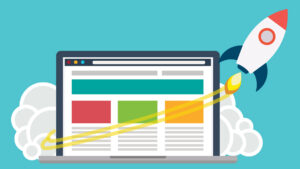In the fast-paced world of the internet, where users expect instant access to information, website speed is paramount. One often overlooked aspect of website optimization is image compression and optimization. In this article, we’ll explore why optimizing images before uploading them to your WordPress website is essential for maintaining optimal performance.
The Importance of Image Optimization
Images play a crucial role in enhancing the visual appeal of a website and engaging visitors. However, if not optimized properly, images can significantly impact page load times, leading to a poor user experience and lower search engine rankings.
When you upload high-resolution images directly from your camera or device to your WordPress website, they often come with large file sizes. These large files consume valuable bandwidth and server resources, slowing down your site’s loading speed.
Benefits of Pre-Optimizing Images
-
Faster Load Times: Optimized images have smaller file sizes, resulting in quicker load times for your web pages. Users are more likely to stay on your site and explore further if they don’t have to wait for images to load.
-
Improved SEO: Site speed is a crucial factor in search engine rankings. By optimizing images, you improve your website’s performance, which can positively impact your SEO efforts and help you rank higher in search engine results.
-
Bandwidth Savings: Optimized images consume less bandwidth, reducing hosting costs for websites with limited resources or those on metered plans.
-
Better User Experience: A fast-loading website enhances the user experience, leading to increased engagement, lower bounce rates, and higher conversion rates.
Avoiding Unnecessary Plugins
WordPress offers a plethora of plugins to optimize images automatically. While these plugins can be convenient, they often come with drawbacks that can outweigh their benefits:
-
Plugin Overhead: Each plugin adds to your website’s overhead, increasing the number of HTTP requests and slowing down load times.
-
Compatibility Issues: Plugins may not always be compatible with your WordPress theme or other plugins, leading to conflicts and potential site errors.
-
Security Risks: Every plugin you install represents a potential security vulnerability. Limiting the number of plugins reduces the risk of security breaches and ensures better website security.
How Unneeded Plugins Slow Down Your Website
Every additional plugin installed on your WordPress website consumes server resources and adds to the complexity of your site. Here’s how unneeded plugins can slow down your website:
-
Increased HTTP Requests: Each plugin typically adds its own CSS and JavaScript files, increasing the number of HTTP requests required to load a web page.
-
Database Bloat: Some plugins store unnecessary data in your WordPress database, leading to database bloat and slower queries.
-
Memory Consumption: Plugins running background processes or utilizing excessive resources can consume significant amounts of server memory, impacting overall performance.
Conclusion
Optimizing images before uploading them to your WordPress website is a simple yet effective way to improve performance, enhance user experience, and boost SEO. By reducing image file sizes and avoiding unnecessary plugins, you can ensure that your website loads quickly and efficiently, keeping visitors engaged and satisfied. Remember, a fast website is not just beneficial for users; it’s also essential for achieving your online goals, whether it’s driving conversions, generating leads, or sharing valuable content with your audience.















